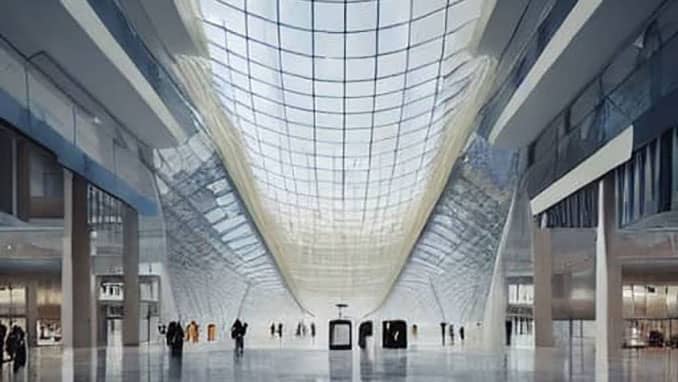
Critical Overview
The Institute of Contemporary Arts (ICA) holds an esteemed place in the pantheon of London’s cultural institutions. Established in 1946 by a group of prominent art figures including Geoffrey Grigson, Roland Penrose, Herbert Read, Peter Gregory, E.L.T. Mesens and Peter Watson, the ICA resisted the impulse to become a conventional art museum, instead positioning itself as a premier destination for cutting-edge art and culture. The ICA’s initial focus was on contemporary artists working in a variety of mediums. After staging its first exhibitions in a rented space on Oxford Street, the ICA relocated to its permanent home in Mayfair in 1950. Throughout the post-war years, the ICA played a crucial role in responding to new trends and developments in the contemporary art world.
During the 1950s, the ICA earned a reputation for staging groundbreaking exhibitions, including Growth and Form (1951) and Parallel of Art And Life (1953), organized by members of the Independent Group, which included proto-Pop artists Richard Hamilton and Eduardo Paolozzi. The ICA also showcased the work of prominent artists such as Francis Bacon, Lucien Freud, and Pablo Picasso. Designers and architects like J. G. Ballard, Terence Conran, and Jane Drew were also drawn to the ICA’s unique brand of contemporary art.
The ICA moved to its current location on The Mall in 1968, where it focused increasingly on live performance, talks, and exhibitions by emerging contemporary artists. Over the years, the ICA has hosted numerous influential exhibitions and performances, including the first institutional shows by Jake & Dinos Chapman, Damien Hirst, Gabriel Orozco, and Richard Prince, as well as early exhibitions by Robert Mapplethorpe, Gerhard Richter, Luc Tuymans, and Steve McQueen. Among the many artists and cultural figures associated with the ICA are Peter Blake, Henri Cartier-Bresson, Jacques Derrida, T.S. Eliot, Michael Foucault, Nan Goldin, Keith Haring, Abbas Kiarostami, Takeshi Kitano, Yves Klein, Jeff Koons, Don Letts, John Maybury, Ian McEwan, Yoko Ono, Horace Ové, Philip Pullman, Cindy Sherman, Zadie Smith, Jean Tinguley, Lars von Trier, Malcolm McLaren, Jackson Pollock, Ronnie Scott, Stravinsky, Bill Viola, Vivienne Westwood, Jeff Wall, and Slavoj Žižek.
The ICA has also made significant contributions to the music and cinema worlds. The ICA introduced The Clash in 1976 and The Stone Roses in 1989, as well as other influential acts such as the Beastie Boys, Throbbing Gristle, Scissor Sisters, and Franz Ferdinand. The ICA is renowned for its groundbreaking films, which have cemented its reputation as a bastion of independent and world cinema. It also remains dedicated to exhibiting and screening artists’ films, including a recent weekend of Kenneth Anger screenings with the filmmaker present. The ICA’s off-site projects have included a musical benefit in 1988 featuring David Bowie, the Pet Shop Boys’ presentation of Battleship Potemkin as a live event in Trafalgar Square in 2004, and the first-ever Art Night in 2016. Other recent projects have focused on Middle Eastern and Arab cinema, as well as the London Underground scene from the 1980s to the present day.
Conclusion
Over the years, the ICA has provided a platform for established and emerging artists alike, alongside influential figures in the cultural sphere. The ICA’s exhibitions have been groundbreaking and diverse.



